Small Living Room Decorating Ideas – Designing a small living room can be both a challenge and an opportunity to create a cozy, functional, and stylish space. The key lies in maximizing every inch without making the area feel cluttered. Start by choosing a light color palette—soft whites, pastels, and neutrals—to give the illusion of a larger, airier room. Incorporate multi-functional furniture such as a storage ottoman, a sofa bed, or nesting tables that can be tucked away when not in use. Mirrors are another clever trick—they reflect natural light and visually expand the space. Vertical storage options, such as wall-mounted shelves or tall bookcases, help free up floor area and add character.

Additionally, opt for furniture with exposed legs to maintain an open, airy feel. When it comes to décor, keep it simple and intentional—use a few statement pieces like a bold rug, textured cushions, or an art print to infuse personality without overwhelming the space. Lastly, good lighting—whether from floor lamps, wall sconces, or string lights—can make even the smallest living room feel warm and inviting.
Small Living Room Decorating Ideas
Light and Neutral Color Palette

Credit@carpenterbabu
Choose a soft color palette of whites, beiges, or light grays to create an open, airy atmosphere. Light shades reflect natural light, making the room feel larger and more inviting. Add subtle texture through linen curtains, plush cushions, or a wool throw. Incorporate natural materials like wood and rattan for warmth. To prevent the space from feeling flat, layer different tones of the same color family and include metallic or glass accents to enhance brightness. A minimalist approach with neutral hues ensures the room feels calm, elegant, and visually expanded.
Multi-Functional Furniture
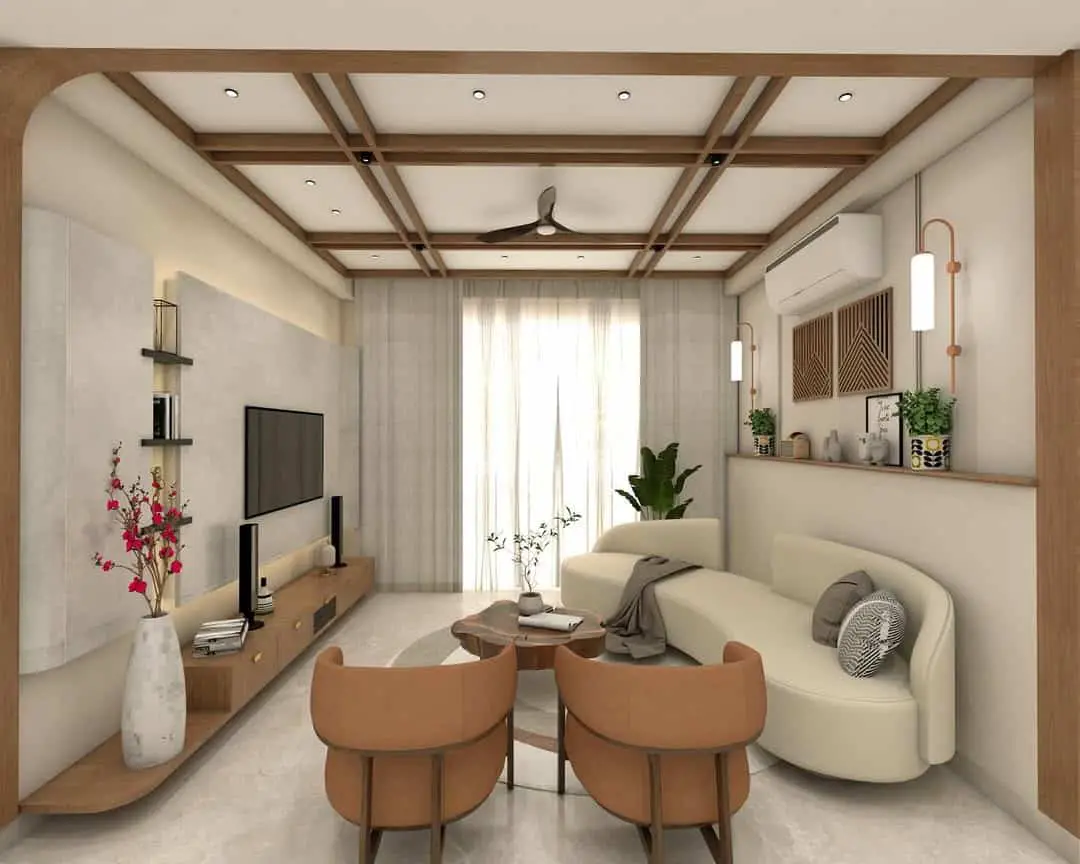
Credit@noirdesigns_designstudio
In a small living room, every piece should serve more than one purpose. Consider a sofa bed for guests, nesting tables for flexibility, or an ottoman with hidden storage. These functional elements help maintain a clutter-free environment while offering convenience. Modular furniture, such as sectional sofas that can be rearranged, also adds versatility. Choose pieces with clean lines and lightweight frames to avoid crowding the space. Incorporate furniture with raised legs to create an illusion of openness underneath, allowing light to flow freely and making the room appear larger and airier.
Mirrors to Amplify Space

Credit@studiokestrel
Strategically placed mirrors can make a small living room appear twice its size. Use a large mirror opposite a window to reflect natural light and create depth. Decorative mirrors also act as focal points while adding elegance. You can experiment with mirrored furniture or a gallery wall of smaller mirrors for visual interest. The reflective surfaces enhance brightness, giving an illusion of more space and movement. Opt for sleek, minimal frames that blend seamlessly with your existing décor to maintain a balanced and cohesive aesthetic throughout the room.
Vertical Storage Solutions
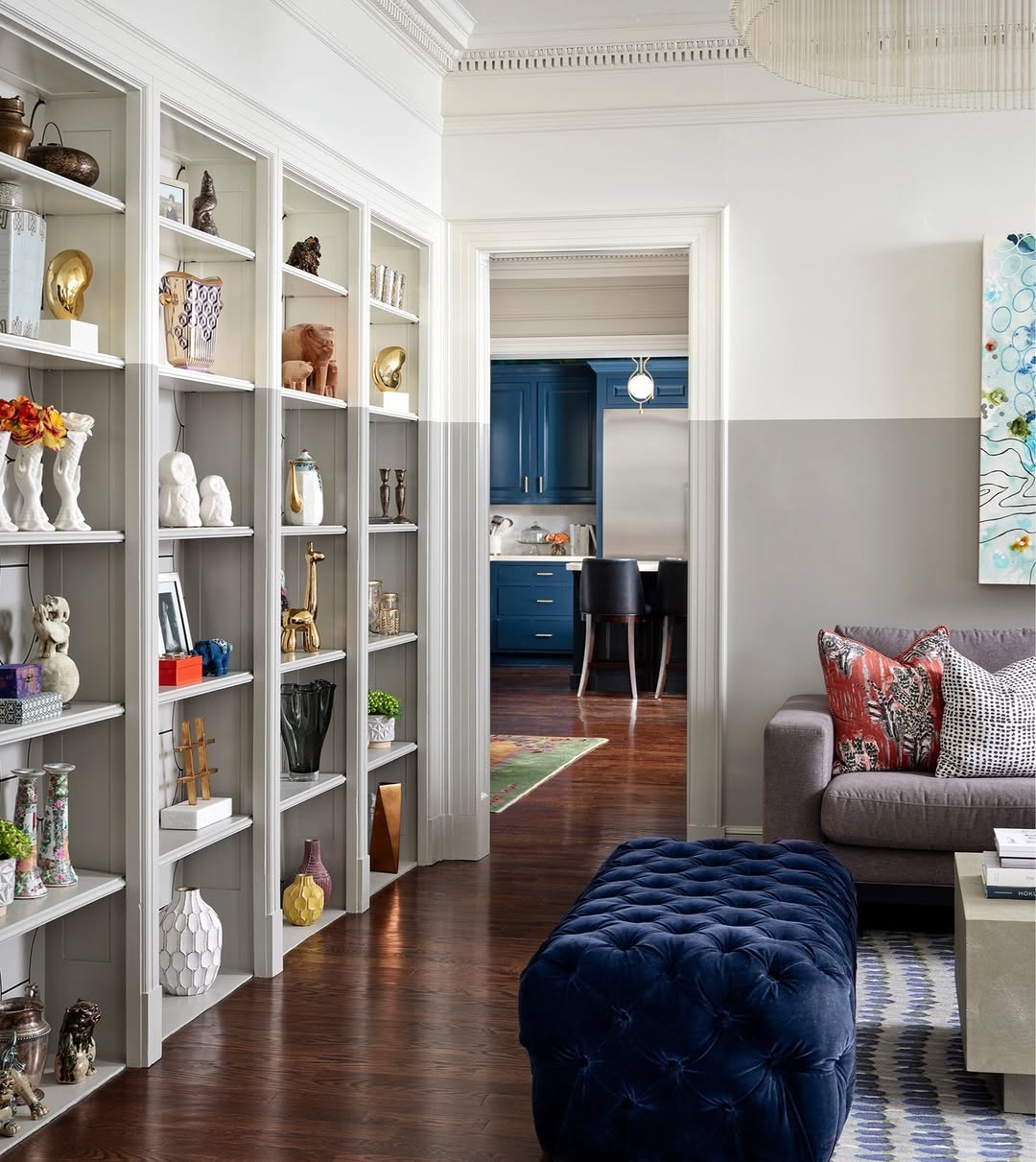
Credit@insidestories_design
Maximize vertical space by using tall bookshelves, wall-mounted cabinets, or floating shelves. This draws the eye upward, creating the illusion of height while providing functional storage. Display decorative items like plants, framed art, and books to add personality. Built-in shelving around the TV or window also saves floor space while keeping essentials organized. For a sleek look, paint shelves the same color as the walls to make them visually recede. This approach keeps the room tidy, stylish, and efficient, allowing every inch of the limited space to be used effectively.
Layered Lighting Design
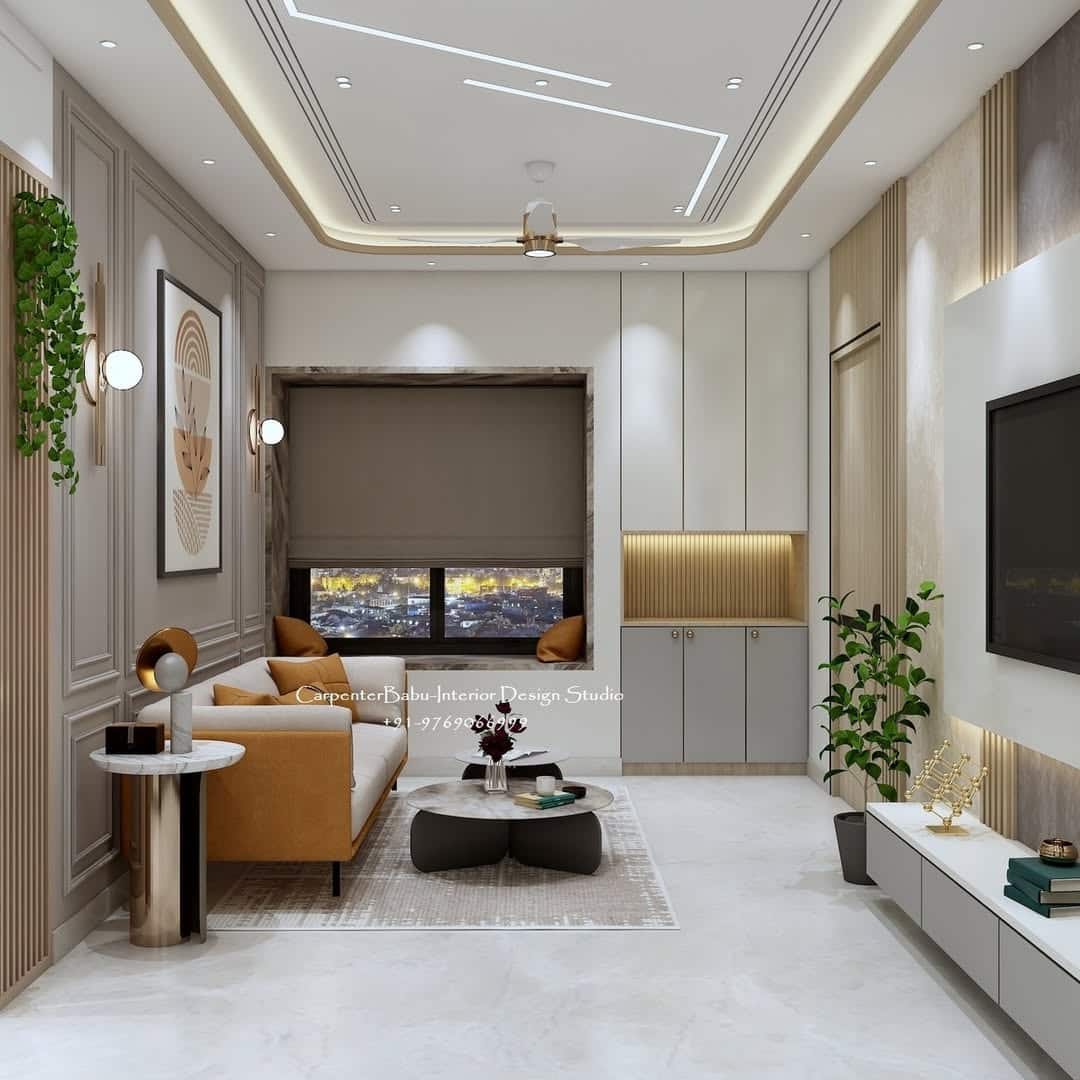
Credit@carpenterbabu
Good lighting transforms a small living room. Combine ambient lighting (like ceiling fixtures) with task lighting (reading lamps) and accent lighting (wall sconces or LED strips). Layering these sources helps control brightness and adds depth. Use warm bulbs to create coziness and reflect light off walls and mirrors to maximize glow. A statement floor lamp in a corner can elongate the space, while hidden lighting under shelves or behind furniture creates subtle sophistication. The right lighting setup not only enhances mood but also makes the room feel larger and more dynamic.
Floating Furniture Layout
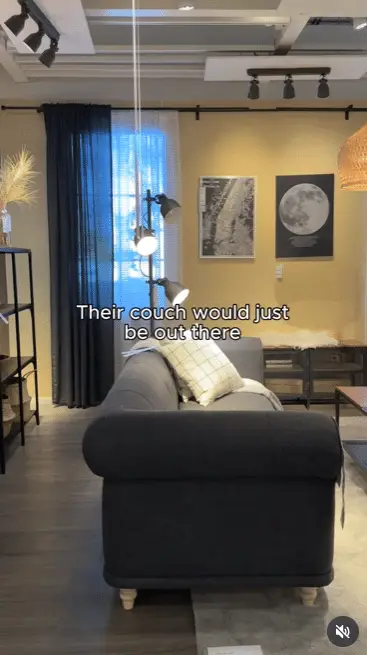
Credit@onton.ai
Instead of pushing all furniture against the walls, try floating the sofa or chairs slightly inward to create flow and define zones. Use a rug to anchor the seating area and maintain structure. This layout gives breathing room around furniture and makes pathways clear. Incorporate a slim console or narrow bookshelf behind the sofa for extra storage without crowding the area. Floating furniture helps balance the space visually, ensuring that even a compact living room feels intentional, organized, and comfortably lived-in rather than crammed or confined.
Statement Rug for Definition
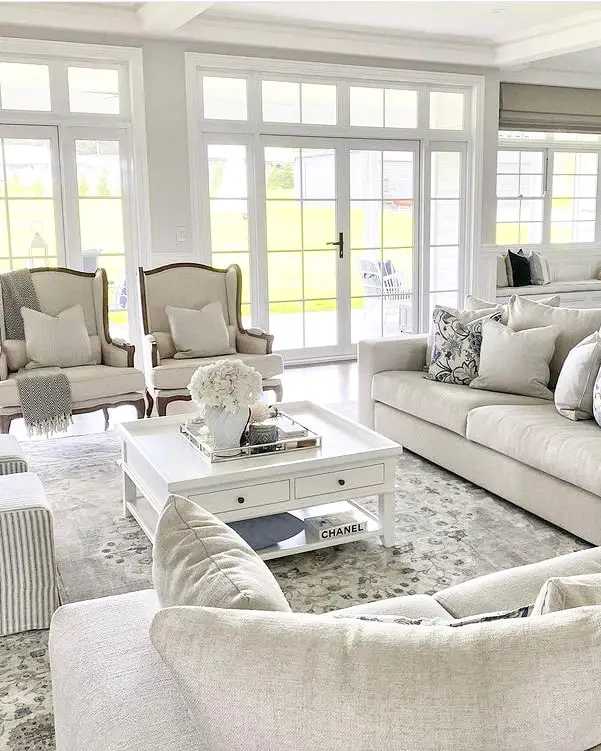
Credit@hamptonsstyle
A statement rug adds texture, color, and personality while defining the seating area in a small living room. Choose a rug large enough to anchor the main furniture pieces but not overwhelm the space. Bold geometric patterns, soft neutrals, or layered textures can all make the room feel cohesive. Rugs also add warmth underfoot and create visual boundaries, helping divide an open-concept area. Pair it with complementary cushions or artwork for harmony. A well-chosen rug ties the décor together, providing comfort and an instant focal point in your compact space.
Compact Seating Arrangements
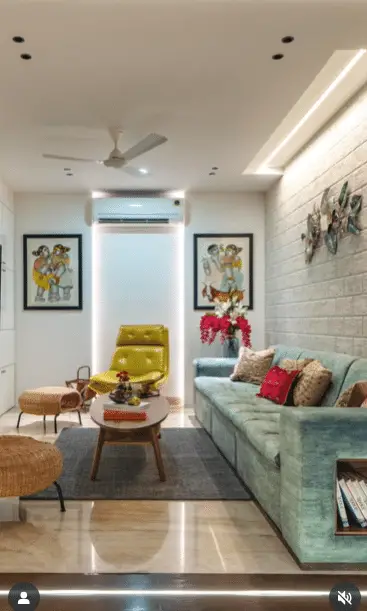
Credit@elitespaces1315
Opt for streamlined furniture suited to your space. A loveseat, armchairs, or a sectional with a chaise offers comfortable seating without bulk. Avoid oversized pieces that dominate the room. Instead, choose slender frames, low backs, and light upholstery. Add versatility with stools or poufs that double as extra seating or footrests. Keep furniture proportional to the room size for balance. Arranging seating around a central point—like a coffee table or fireplace—encourages intimacy and conversation while maintaining openness. Compact seating ensures functionality without sacrificing style or comfort.
Greenery and Natural Elements
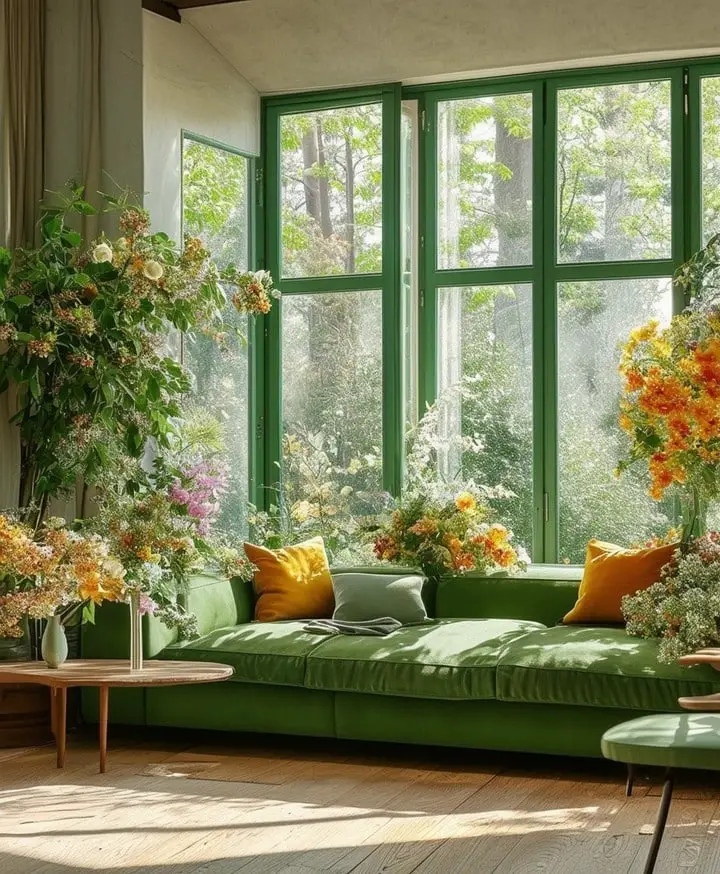
Credit@decormattersapp
Plants breathe life into a small living room. Opt for compact, low-maintenance greenery like pothos, snake plants, or succulents. Hanging planters or wall-mounted pots save floor space. Add natural textures such as wooden furniture, jute rugs, or rattan baskets for warmth and balance. Greenery softens sharp lines, improves air quality, and creates a calming vibe. A single large potted plant can also serve as a striking design element. The natural contrast of green against neutral tones adds vibrancy without clutter, transforming even a small room into a refreshing oasis.
Personal Touches and Artwork

Credit@noemielcote
Even in small spaces, personality should shine through. Use carefully selected artwork, framed photos, or travel mementos to tell your story. Instead of filling walls completely, focus on one statement gallery wall or a single oversized art piece to prevent visual chaos. Floating shelves can showcase small decorative objects or books. Stick to a cohesive color palette to maintain harmony. Personal touches make the room feel warm, lived-in, and unique, turning a limited area into a stylish sanctuary that reflects your taste and experiences.

Hi, I’m Maggie Culp, the founder of PartyVibesFun.com, based in North Little Rock, Arkansas, United States! With a passion for creating unforgettable celebrations, I specialize in turning any event into a fun and vibrant experience. From birthday parties to themed gatherings, I’m here to help you bring your party ideas to life with ease and excitement. Whether you’re looking for unique games, creative themes, or party planning tips, I’m dedicated to making sure every moment of your event is filled with joy. Let’s create memories together and make your next party the talk of the town!
